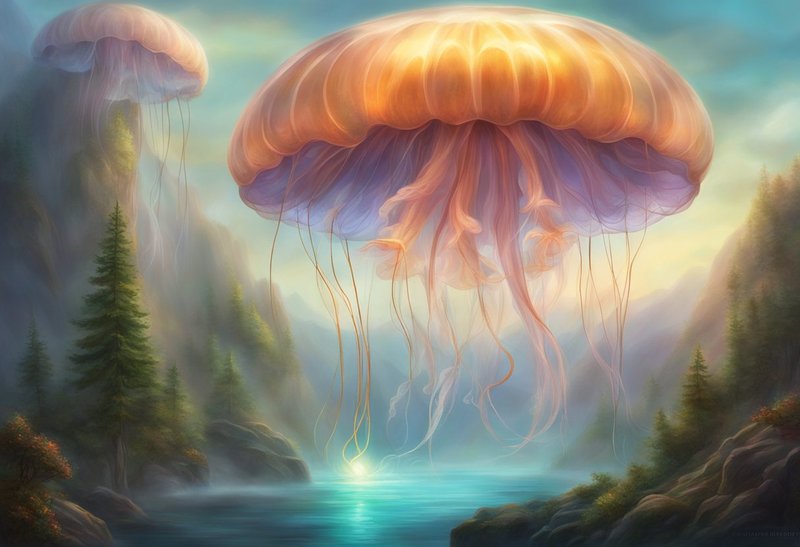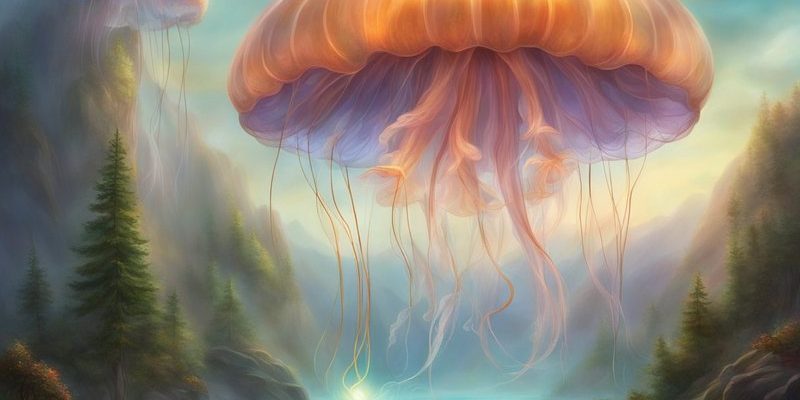
Jellyfish have been around for more than 500 million years, long before dinosaurs even roamed the Earth. Their mesmerizing, ethereal beauty has given rise to countless stories and legends across various cultures. From being seen as symbols of love to omens of bad luck, jellyfish have carved a unique niche in human culture. Here’s the thing: exploring these myths not only helps us appreciate jellyfish better but also brings us closer to understanding how humans relate to nature.
The Ancient Views: Jellyfish in Mythology
In many ancient cultures, jellyfish held significant meaning. For example, in Greek mythology, the jellyfish was often associated with immortality. The myth of Medusa, who was transformed into a gorgon, highlights this link. When she was struck by the gaze of Perseus, jellyfish-like creatures were said to form from her blood. This transformation symbolizes the idea of life and death, illustrating how jellyfish can float freely in waters that seem ready to consume them.
Similarly, the Japanese have a unique relationship with jellyfish, referencing them in their folklore. The “Amanokawa” legend describes jellyfish as messengers from the gods. Some believed that encountering these creatures meant the gods were sending good fortune your way. Honestly, it’s fascinating to think about how these creatures, with their soft, transparent bodies, could represent divine messages.
The Sign of Love or Heartbreak?
You might be wondering about jellyfish and their symbolism in love. In some cultures, they are viewed as a sign of affection and romance. For instance, in Chinese culture, jellyfish are often associated with love and longing. The delicate way their tentacles sway in the water mirrors the gentle touch of a lover—soft yet captivating.
On the flip side, in other traditions, they can represent heartbreak or disappointment. The Mediterranean region, for example, has stories that warn of the dangers of falling in love too deeply, where jellyfish symbolize fleeting relationships. This duality is intriguing; jellyfish become a mirror reflecting the complexities of human emotions. One minute they can represent sweet love, and the next, they symbolize the pain of loss.
Superstitions: Good Luck or Bad?
Superstitions surrounding jellyfish can get quite interesting. In many coastal areas, encountering a jellyfish while swimming may be seen as a bad omen. Some believe that if one is stung by a jellyfish, it foretells future troubles. It’s almost like a rite of passage—swim at your own risk!
However, other cultures flip this idea on its head. In parts of Caribbean culture, jellyfish stings are thought to be protective—a way of warding off bad spirits. Here, jellyfish become guardians of the shoreline. You can see how these different perspectives shape people’s relationships with the ocean and its inhabitants. One culture’s fear can be another’s fascination, demonstrating how interconnected humans are with nature.
Jellyfish in Art and Literature
When it comes to art, jellyfish have graced the canvases of numerous artists. The fluidity and grace of these creatures have inspired works celebrating their beauty. In modern art, jellyfish are often depicted as symbols of fragility and transience—perfect for illustrating the fleeting nature of life.
In literature, jellyfish have popped up in poems and stories, often symbolizing the unknown. The ethereal nature of their bodies moving through the water evokes feelings of mystery. In some children’s books, jellyfish are portrayed as friendly creatures, inviting kids into an underwater adventure. This portrayal contrasts starkly with the often fearsome images they carry in folklore, showing how culture can twist our perception.
Cultural Celebrations: The Jellyfish Festival
One of the most fascinating ways cultures celebrate jellyfish is through dedicated festivals! For instance, in Japan, the city of Kagawa hosts a Jellyfish Festival, where visitors can learn about these creatures, try jellyfish dishes, and enjoy art inspired by them. It’s a unique way to appreciate the jellyfish and their environmental role while also enjoying local cuisine.
During these festivals, jellyfish are not only a topic of education, but they also bring people together. From crafting jellyfish lanterns to participating in storytelling sessions about their significance, the festivals creatively engage communities. Imagine walking through colorful stalls adorned with breathtaking jellyfish art—all while learning about their different species and habitats.
The Environmental Perspective: A Sign of Change
In recent years, jellyfish have gained attention for their role in signaling changes in marine ecosystems. A sudden increase in jellyfish populations can often indicate shifts in environmental health, like rising ocean temperatures or overfishing.
This transformation can spur conversations around climate change and marine conservation. In some cultures, jellyfish are seen as indicators of environmental imbalance. This perspective highlights the need for sustainable practices to preserve marine life. Honestly, it’s like jellyfish are the canaries in the coal mine for ocean health—reminding us to pay attention to our planet and its needs.
Jellyfish are more than just creatures floating through our oceans; they embody a tapestry of myths, beliefs, and environmental significance. From ancient myths to modern festivals, these captivating beings have captured human imagination for centuries. As we continue to learn about jellyfish, it’s essential to appreciate both their beauty and their role in our ecosystems.
So, the next time you spot a jellyfish, take a moment to reflect on its history and the stories it carries. Whether seen as symbols of love, omens of fortune, or even indicators of ecological change, jellyfish remind us of our deep connection to nature. With every encounter, we uncover a little more about ourselves and the world around us.

